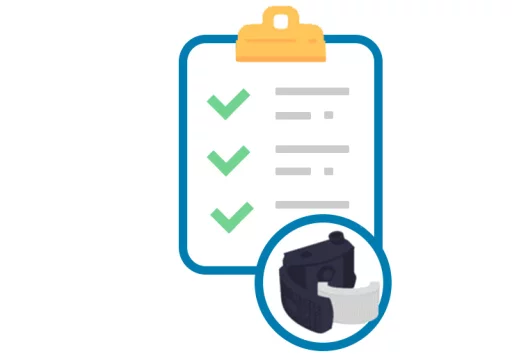New enforcement expectations require all businesses undertaking welding activities to ensure that effective engineering controls are provided and used correctly to control fumes arising from welding activities. It is now advised that larger fume-producing welding types such as MIG & MMA require a double-pronged defense of respiratory protective equipment (RPE) and local exhaust ventilation (LEV). See our welding fume extraction category to browse your options.

1. Comprehensive Risk Assessment
Effective welding fume control begins with a comprehensive risk assessment tailored to your specific workplace. This involves a detailed evaluation of all welding activities, considering the types of welding processes employed, such as MIG, MMA, or TIG, and the materials being welded.
The frequency and duration of welding operations must also be taken into account. A thorough assessment will help determine the most appropriate type and capacity of fume extraction equipment needed to protect your workers.
It's crucial to consider the size and layout of your workspace, as well as any factors that might influence fume dispersion. Remember, the Health and Safety Executive (HSE) has emphasized that even mild steel welding fumes are now classified as carcinogenic, making a robust risk assessment an essential first step in ensuring a safe working environment. This assessment should be documented and regularly reviewed.

2. Prioritising Local Exhaust Ventilation (LEV)
Local Exhaust Ventilation (LEV) is a cornerstone of effective welding fume control and is a legal requirement in the UK under HSE regulations. LEV systems are designed to capture fumes directly at the source, preventing them from spreading throughout the workspace.
To maximise effectiveness, it's vital to position LEV extraction points as close as possible to the welding arc. This ensures that fumes are captured before they reach the welder's breathing zone. Depending on the specific needs of your operation, various LEV solutions are available:
- On-torch welding fume extraction offers highly localised fume capture, making it ideal for certain applications
- Mobile Welding Fume Extraction Units provide greater flexibility for workshops with varying welding locations.
You can explore the different LEV options and their applications in our articles On Torch Fume Extraction Vs Mobile Fume Extraction.

3. Maintaining Equipment and Providing Training
To ensure the continued effectiveness of your LEV systems, regular inspection and maintenance are essential. This includes routine checks of filters, airflow, and the overall integrity of the system, and updating spare parts if needed. In addition to maintaining the equipment, it's equally important to provide comprehensive training to all welders and relevant personnel.
Training should cover the proper use of LEV and any required Respiratory Protective Equipment (RPE). Regular training sessions will ensure that workers are fully aware of safe working procedures, know how to identify and report any potential issues, and understand the importance of consistent fume control practices.

4. Implementing Respiratory Protective Equipment (RPE)
Even with effective LEV systems in place, there may be situations, particularly with high fume-producing welding tasks, where Respiratory Protective Equipment (RPE) is necessary to provide an additional layer of protection.
It is now advised that larger fume producing welding types such as MIG & MMA require a double pronged defence of respiratory protective equipment (RPE) and local exhaust ventilation (LEV). Suitable RPE, such as powered air-purifying respirators (PAPR), should be provided to welders. It is critical to ensure that RPE is correctly fitted to each individual and that workers receive thorough training on its proper use, maintenance, and inspection.
You can find a guide to PAPR on our website. If you are working in the welding industry, we are providing a guide about the ESAB EPR-X1.1 and if you are not working in the welding industry we are also providing a guide about the 3M Versaflo model.
Regular inspection and maintenance of RPE are also crucial to ensure its ongoing effectiveness.
By adhering to these best practices, businesses can effectively manage the risks associated with welding fume exposure and create a safer and healthier environment for their workforce. Compliance with HSE regulations is not only a legal obligation but also a fundamental responsibility to protect the well-being of your employees. Investing in robust fume extraction systems, providing appropriate RPE, and ensuring thorough training are all vital components of a comprehensive approach to welding safety.
In case you want to dig deeper into the Welding Fume Extraction subject we've updated our 2025 Complete Guide for Welding Fume Extraction.

